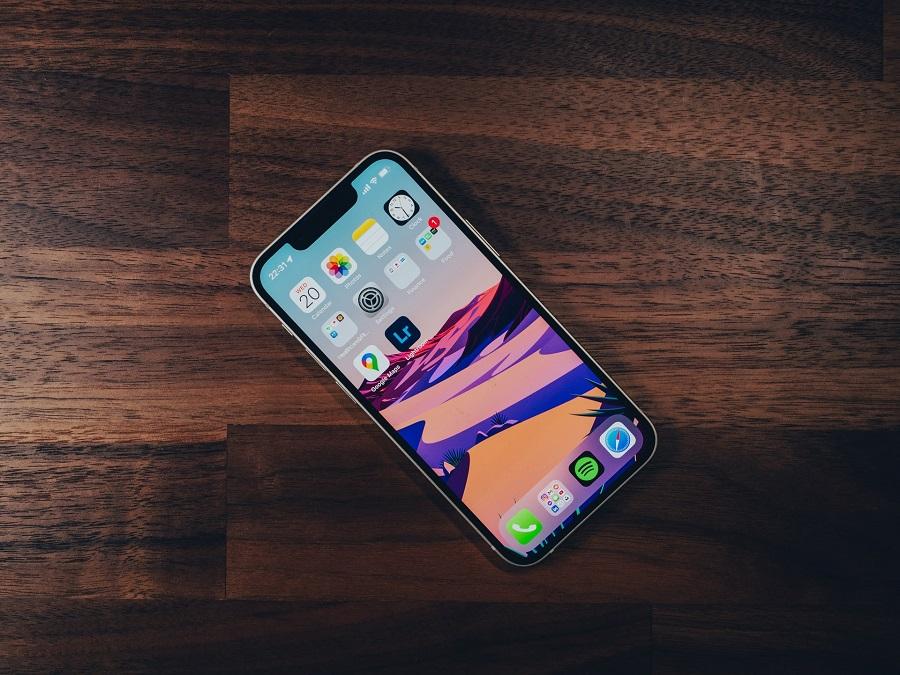Apple is expected to introduce four new iPhones later this year, but more significant software and hardware upgrades are only anticipated in the upcoming iPhone 14 Pro models. The higher-end devices are rumored to gain an always-on display mode, and a new report suggests more settings similar to Apple Watch will also be implemented in the flagship phones.
Bloomberg’s Mark Gurman shared more details on the reported always-on display mode for iPhone 14 Pro in the latest edition of the Power On newsletter. The journalist was the first to report on the upcoming feature ahead of the Worldwide Developers Conference earlier this month. Gurman now added that iPhone 14 Pro and iPhone 14 Pro will be able to display certain widgets while they are locked.
To maintain battery efficiency, the always-on display mode will allow the iPhone 14 Pro phones to display information from weather, calendar, and stocks widgets at low brightness and lower frame rate. This is the same mechanism Apple used for the Apple Watches, where the company first introduced the always-on display feature. The same report added that there will also be an option for users to keep “sensitive data” from appearing on the lock screen while always-on display mode is enabled.
One of the most significant updates announced for iOS 16 is the improved lock screen. The same report said this feature has been in the works for the last two years, and its announcement may be another indication that Apple plans on introducing an always-on display mode in the iPhone 14 Pro models later this year.
The newsletter doubled down on other rumored upgrades for the iPhone 14, including the debut of the A16 Bionic chip. However, as mentioned in earlier reports, Apple is expected to only use the new SoC on the iPhone 14 Pro models. The iPhone 14 and iPhone 14 Max, meanwhile, would keep using the A15 chip or possibly a new version of the chip. Gurman also expects the iPhone 14 series to still feature a Lightning port, but he agreed with analyst Ming-Chi Kuo’s prediction that Apple could finally transition to USB-C by next year.
Photo by Karol Smoczynski on Unsplash



 SoftBank Completes $41 Billion OpenAI Investment in Historic AI Funding Round
SoftBank Completes $41 Billion OpenAI Investment in Historic AI Funding Round  ByteDance Plans Massive AI Chip Spending Boost as Nvidia Demand Grows in China
ByteDance Plans Massive AI Chip Spending Boost as Nvidia Demand Grows in China  Dina Powell McCormick Resigns From Meta Board After Eight Months, May Take Advisory Role
Dina Powell McCormick Resigns From Meta Board After Eight Months, May Take Advisory Role  Jared Isaacman Confirmed as NASA Administrator, Becomes 15th Leader of U.S. Space Agency
Jared Isaacman Confirmed as NASA Administrator, Becomes 15th Leader of U.S. Space Agency  TSMC Honors Japanese Chip Equipment Makers With 2025 Supplier Awards
TSMC Honors Japanese Chip Equipment Makers With 2025 Supplier Awards  Moore Threads Unveils New GPUs, Fuels Optimism Around China’s AI Chip Ambitions
Moore Threads Unveils New GPUs, Fuels Optimism Around China’s AI Chip Ambitions  noyb Files GDPR Complaints Against TikTok, Grindr, and AppsFlyer Over Alleged Illegal Data Tracking.
noyb Files GDPR Complaints Against TikTok, Grindr, and AppsFlyer Over Alleged Illegal Data Tracking.  Oracle Stock Slides After Blue Owl Exit Report, Company Says Michigan Data Center Talks Remain on Track
Oracle Stock Slides After Blue Owl Exit Report, Company Says Michigan Data Center Talks Remain on Track  Republicans Raise National Security Concerns Over Intel’s Testing of China-Linked Chipmaking Tools
Republicans Raise National Security Concerns Over Intel’s Testing of China-Linked Chipmaking Tools  FTC Praises Instacart for Ending AI Pricing Tests After $60M Settlement
FTC Praises Instacart for Ending AI Pricing Tests After $60M Settlement  Oracle Stock Surges After Hours on TikTok Deal Optimism and OpenAI Fundraising Buzz
Oracle Stock Surges After Hours on TikTok Deal Optimism and OpenAI Fundraising Buzz  Apple Opens iPhone to Alternative App Stores in Japan Under New Competition Law
Apple Opens iPhone to Alternative App Stores in Japan Under New Competition Law  Samsung Electronics Secures Annual U.S. Licence for China Chip Equipment Imports in 2026
Samsung Electronics Secures Annual U.S. Licence for China Chip Equipment Imports in 2026  Texas App Store Age Verification Law Blocked by Federal Judge in First Amendment Ruling
Texas App Store Age Verification Law Blocked by Federal Judge in First Amendment Ruling  Applied Digital Stock Rises on AI Cloud Spinoff Plan and ChronoScale Launch
Applied Digital Stock Rises on AI Cloud Spinoff Plan and ChronoScale Launch  OpenAI Explores Massive Funding Round at $750 Billion Valuation
OpenAI Explores Massive Funding Round at $750 Billion Valuation  U.S. Lawmakers Urge Pentagon to Blacklist More Chinese Tech Firms Over Military Ties
U.S. Lawmakers Urge Pentagon to Blacklist More Chinese Tech Firms Over Military Ties 






























